- Home
- Tom Clancy
Into the Storm: On the Ground in Iraq sic-1 Page 21
Into the Storm: On the Ground in Iraq sic-1 Read online
Page 21
This diagram, while not accurately portraying the space between units, all the support vehicles required, or the distances between vehicles in combat, gives an indication of the type of ground equipment in a rolling armored division and the amount of combat power in this force. During Desert Storm, General Franks controlled five of these types of combat units, plus additional combat, combat-support, and combat-service-support units.
Most differences between corps will be in the type of combat units involved (tank, infantry, artillery), support required (communications, engineers, etc.), and logistics (trucks, fuel, ammunition, medical, etc.). Each of these different corps will train according to its specific mission. That will include practicing with various combinations of units to ensure they can operate together.
Working with this basic mix of units, the commander then decides how to array them in time, space, and distance to focus combat power continually on the enemy in a moving zone about 150 kilometers wide and 175 kilometers deep. (The width and depth are functions of the terrain over which you are operating and the enemy forces you face — sometimes you are more condensed and sometimes you can expand even farther.) In other words, you begin with a basic mix of units in the corps that gives you the widest range of options against a particular enemy on a piece of terrain. It is then the commander's job to use effectively the power available to him by arranging those units in such a way that the right combination of units will be at the right place at the right time. And he will either keep them that way or will change the combination as needed to suit changing situations during the series of battles he chooses to fight to accomplish the campaign objective.
A commander also has to look at some inescapable physical realities. For example, each of the close to 1,600 tanks in VII Corps in Desert Storm was capable of firing a projectile at more than a kilometer a second over a range in excess of 3.5 kilometers and destroying whatever it hit. So on a relatively flat desert in confined space, you want to ensure that each of these 1,600 units is pointed in the right direction. Otherwise some of the fire, inadvertently, might not be directed at the enemy but at your own troops. In the desert, for example, on a corps front 150 kilometers wide with all 1,600 tanks on line (not a high probability), you would have a tank every 100 meters. Direction of attack and spacing between units become especially important in such a confined space.
Other inescapable physical realities involve continued support of such a large, moving organization. In VII Corps on Desert Storm, there were almost 50,000 vehicles and close to 800 helicopters, and some 20 fixed-wing two-engine intelligence-gathering aircraft. They needed fuel. Daily fuel consumption was about 2.5 million gallons of diesel for ground vehicles and about half that much aviation fuel for aircraft. With their turbine engines switched on, tanks use the same amount of fuel, moving or stopped. The rule of thumb was to refuel tanks every eight hours. After one refueling, the fuel trucks accompanying units would have to travel to a resupply point, fill up with fuel, then return to their units. Meanwhile, while the fuel trucks were resupplying, their units were moving away in the opposite direction from the resupply run. In medium to heavy enemy contact, the corps used about 2,500 tons of ammunition a day. Normally, tanks and other direct-fire systems carried enough ammunition to last them several days, so they did not need immediate resupply. On the other hand, artillery and mortars firing at a much higher rate required resupply from accompanying trucks. These would then have to make the same resupply runs as the fuel trucks. Some corps units also needed places to operate from — airfields, forward operating bases (for helicopters), staging areas (for logistics support, etc.). This required some real estate management and some need for roads (even in the desert), and priorities had to be established for use of those areas and roads.
PRINCIPLES OF APPLICATION
Orders and Intent
Since, as stated earlier, battle is chaos on a grand scale, with chance intervening continually, you try to create chaos for the enemy by giving him more situations than he can handle in a given time frame and to keep him in that state. At the same time you must keep a certain amount of control and focus on your own operation.
To create and instill this sense of order to their own side, commanders use "intent" and "orders." They then rely first on the disciplined translation and then on the execution of these by each echelon in their organization. In other words, at each succeeding echelon of command — corps, division, brigade, battalion, company — that commander must understand what the next higher commander ordered, then figure out what his echelon must do to accomplish his part in the overall mission. The idea here is not to stifle initiative in subordinate echelons, but to ensure unity of effort in the entire organization and maximum use of available combat power.
To attain this unity of effort through intent and orders, there is communication, both written and oral. After communication, interpretation and problem solving follow, at each echelon of command, to determine what has to be done at that echelon. During this process, commanders allow room for their subordinates to exercise initiative and to operate with the freedom to adjust to local conditions (in those cases where these local adjustments don't also require adjustments by the whole organization). This need to adjust to local conditions is both the reason why there are so many command echelons and why U.S. Army doctrine demands that each of these exercise local initiative. All this takes time. If orders are not clear, or if they are constantly changing, it takes more time.
In VII Corps, Fred Franks's order as corps commander had to be received by division commanders. Once it was received, each of them had to understand and then decide what they needed to do to comply with it. Then they would translate Franks's order both into their own words and into terms that fit their particular situation. As soon as this was done, they would pass the order to their subordinate echelons. This process would be repeated at each echelon until all members of the corps had their orders.
A commander's "intent" is quite simply his vision of how he sees the operation working out. It is his concise expression of the means, of the end, of the main effort, and of the risks he is prepared to take. Because of its importance in putting the commander's personal stamp on the operation, commanders usually write the intent themselves. Often in battle, if a commander's intent is well understood, subordinate commanders can continue to operate even in the absence of written orders or when communications break down. Late on 27 February 1991, Lieutenant Colonel Bob Wilson and the 1st Squadron, 4th Cavalry, in the 1st INF Division lost communications with his higher headquarters. But because Wilson understood division's and corps' intent of earlier that morning, he and his squadron continued to attack east across Highway 8 between Basra and Kuwait City, where they captured large numbers of prisoners.
An "order" takes that intent and lays out the complete written set of instructions for the entire operation. It is a formal publication that is normally written by the staff using decisions by the commander that contains the commander's intent, a more detailed concept of the operation, and a detailed list of instructions to each of the subordinate echelons, which they in turn use to do their own plan. The order normally has a number of annexes that detail how the combat-support and combat-service-support units will harmonize their operations according to the commander's intent. Characteristically, it is long.
The organization of an order in the U.S. Army follows a five-paragraph organization originated at the turn of the twentieth century. These five paragraphs are:
1. enemy situation, friendly situation, and attachments and detachments in terms of organizations of the major unit;
2. mission;
3. operations — including a concept for the major unit, a concept for maneuver, a concept for fires to include a whole fires annex, a detailed list of tasks to subordinate units, and a list of major coordinating instructions;
4. logistics;
5. command and signal (i.e., the command arrangements), including key radio frequencies for command radio nets
and succession of command in case of death or evacuation of the commander.
Annexes will include details of intelligence, engineer, signal, airspace command and control, air defense, logistics, and any other special considerations, such as psychological operations, special operating forces, and deception operations. A complete corps order might total 200 or more pages, complete with graphic drawings and overlays to depict unit boundaries, phase lines, and objective areas used as control measures to ensure coherence of the operation. At more senior tactical echelons, such as brigade, division, and corps, it is also the practice in the U.S. Army to include a matrix — called a "synchronization matrix" — that seeks to synchronize all major activities with battlefield events and time.
In order to achieve focused energy, each subordinate plan must be in harmony with the plan of the next higher echelon. General Bill DePuy used to call such harmonized plans "nested concepts." In U.S. Army doctrine, enough variance is permitted, even demanded, at each subordinate echelon so that commanders can exercise their own initiative as situations develop in their area of operations. Yet, in order to achieve the necessary cohesion in the chaos that is land battle, this initiative must always be exercised within the overall intent of the higher headquarters. Determining how much leeway to allow subordinate echelons is a matter of command judgment, and it is influenced by many factors, including the complexity of the mission, the size of the operating area, and the personality and capabilities of subordinate commanders. Nonetheless, to take full advantage of the leadership and talent available in soldiers and leaders, and thus reach full combat potential, initiative is required and demanded in U.S. Army doctrine.
When VII Corps received an order from its next higher echelon (Third Army in Desert Storm), the corps would make its own analysis and devise its own plan, then issue that plan to the corps as an order in the format described above. This process would have to be repeated seven times to reach a tank crew in one of the divisions in VII Corps. All this, of course, takes time. The rule of thumb in the Army is that you should use one-third of the available time yourself and allow your subordinates to use the other two-thirds. This gives your subordinates time to figure out their own actions (which can be rather complex in and of themselves: a division has about 8,000 vehicles and in Desert Storm had up to 22,000 soldiers), to issue their own orders to their echelons (normally in writing and with sketches and map diagrams), to do some war gaming and other preliminary testing to ensure the plan will work, and then to conduct some rehearsals to ensure that all commanders understand what is expected of them and their organizations. Sometimes these rehearsals suggest changes to the plan.
In a corps the size of VII Corps, the rule of thumb is that this entire process takes as much as seventy-two hours to travel from the commander down to, say, a tank crew. In other words, from the time Franks got his orders from his own next higher echelon (in Desert Storm, Third Army), the orders process was done seven times before that tank crew started moving toward its new objective.
In an attempt to remove as much chance of misunderstanding as possible, this communications process of intent and orders has been refined over the years. Military terms are used, each with a specific meaning, and maps and other graphic symbols are also used, each with its own specific meaning. In spite of this, normal human dynamics, chance occurrences, and enemy actions lead to misinterpretations, and these are often exacerbated by dynamics of fatigue, physical danger, and on occasion by personality and character distortions. In his great classic, On War, the German theorist Clausewitz called the cumulative effect of all this "friction." Such "friction" is quite simply a code word for everything that gets in the way of perfect understanding and perfect execution. Some elements of friction are physical and external, such as effects of weather on soldiers and materiel, cold, heat, sandstorms, light, or lack of it. Others are human, such as fatigue, imprecise language and thus misinterpretation, personality traits of various commanders, etc. Some others are due purely to the kinds of chance events that inevitably occur when so many people and machines operate in confined spaces: map-reading errors, wrong turns, breakdown of key equipment, unexpected enemy actions, etc. Commanders try to be aware of all of these and to minimize their effects.
Since the entire process of battle command — problem solving, dissemination of the solution, and actual physical execution — tends to take a long time, commanders are always looking for ways to reduce that time. They also look to minimize friction, in order to ensure that their own organization can make necessary battle adjustments faster than the enemy. Franks and his commanders worked and drilled this hard in VII Corps.
Battle is always two-sided. As you are working on your problem, your enemy is working on the same problem you are and has his own solution. Thus, while you want to begin with a basic plan or idea of what you want to get done, you always have to tell yourself that plans are never static. Your enemy — and friction — will see to that. That is why plans frequently change after contact with the enemy is made.
After that, you are literally in a fight. In battle, you and the enemy are each constantly looking for the edge to win. You are each looking to gain the initiative. Often it is the side that can adjust most rapidly that will eventually gain the initiative and go on to win. You and your commanders try to outthink the enemy commanders, and thus give your troops all the advantages to outfight the enemy. You try to give him more problems to solve in a given time than he and his organization can possibly handle. You try to run him out of options, break the coherence of his operation, and thus force him to fight you on your terms. Then you physically defeat or destroy him.
Senior commanders must therefore decide far enough in advance of a planned action for their subordinate echelons to do their own problem solving, communicate the solution, and execute it. One of the greatest skills of senior commanders is the ability to forecast. The more senior you are, the farther into the future you have to force yourself to look. You must be able to see beyond what others see. You must be involved in the present to know what is going on, but you must also discipline yourself to leave those actions for your subordinates to handle while you forecast the next battle, and the one after that. And at the same time, you must see that all of these battles are linked in purpose. Then you must decide — leaving sufficient time for subordinates to react both intellectually and physically.
— Intellectually, so they can do their own problem solving and communication to their organizations;
— Physically, so they can get the right combination at the right place at the right time, and with soldiers and units motivated and fit for battle.
Smart commanders share their thoughts. They think "out loud." In the Army, there are terms, and even procedures, for this. For instance, commanders can give subordinates a "heads-up" — "this is what I am thinking of doing" — to put their subordinates into their own head space. A "heads-up" requires no action. They can also issue a "warning order," which does require action. A "warning order" is a shorthand but official communication that tells a subordinate, "I will order your unit to do the following; I'll send the formal, more detailed order shortly."
Once they have forecast and decided, senior commanders must resist the temptation to tinker at the margin of orders they've issued. Tinkering will only contradict and confuse the process. (An emergency caused by an unexpected opportunity or an unexpected enemy action requiring immediate action to preserve the force will of course require a change in orders.) Orders issued are difficult to impossible to retrieve, especially when units and leaders are tired and in physical danger. So decide, make it stick, and leave it alone.
Yet adjustments are necessary, so commanders can and do plan ahead to give themselves and their subordinates choices during changeable situations. For example, if the enemy stands still, you do one thing. If he retreats before you, you do another. If he moves toward you, you do something else. If he tries to maneuver around you, you do still something else. In such cases, you want t
o be able to make adjustments without going through an entire seventy-two-hour cycle. These adjustments frequently resemble the "audibles" used in football. When a quarterback looks over the defense and sees a situation that's different from what he anticipated when he called the original play, he can call an "audible" — a play from a previously rehearsed list of possibilities. Commanders also develop "plays" to call in certain anticipated future situations. The formal name for these in doctrine is "branches and sequels." (Branches are variances off the original plan; sequels are follow-on actions to continue the original plan.) In VII Corps in Desert Storm, the branches and sequels were called FRAGPLANs. These FRAGPLANs were each contingent on a future battlefield situation. You forecast the future. If it looks like this, you adjust to do this. Meanwhile, each of your echelons will also have developed its own set of FRAGPLANs for execution when or if you call one of yours. No forecast will ever be perfect, so at best some minor adjustments are normally required.

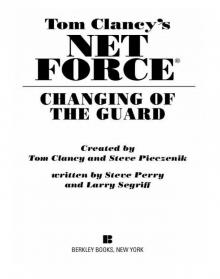 Changing of the Guard
Changing of the Guard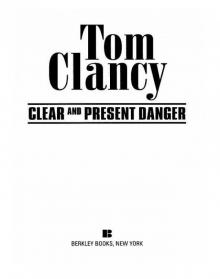 Clear and Present Danger
Clear and Present Danger Hounds of Rome
Hounds of Rome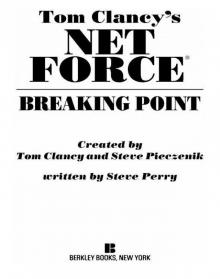 Breaking Point
Breaking Point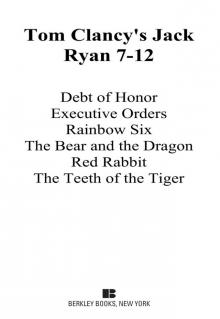 Tom Clancy's Jack Ryan Books 7-12
Tom Clancy's Jack Ryan Books 7-12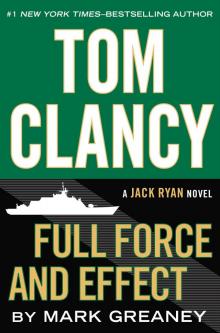 Full Force and Effect
Full Force and Effect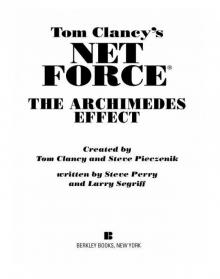 The Archimedes Effect
The Archimedes Effect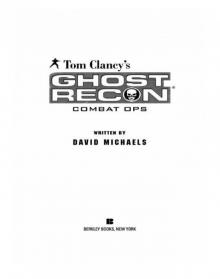 Combat Ops
Combat Ops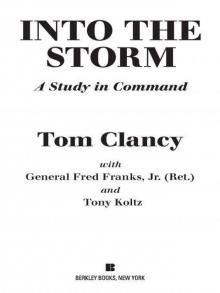 Into the Storm: On the Ground in Iraq
Into the Storm: On the Ground in Iraq Under Fire
Under Fire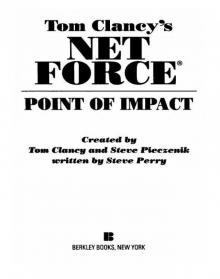 Point of Impact
Point of Impact Red Rabbit
Red Rabbit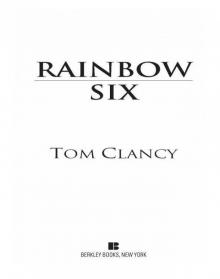 Rainbow Six
Rainbow Six The Hunt for Red October
The Hunt for Red October The Teeth of the Tiger
The Teeth of the Tiger Conviction (2009)
Conviction (2009)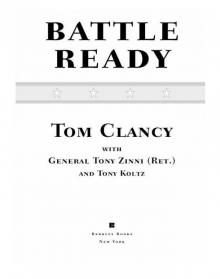 Battle Ready
Battle Ready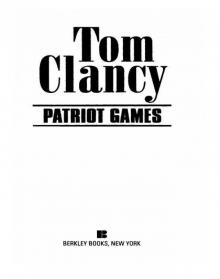 Patriot Games
Patriot Games The Sum of All Fears
The Sum of All Fears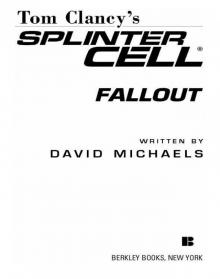 Fallout (2007)
Fallout (2007) Red Storm Rising
Red Storm Rising The Cardinal of the Kremlin
The Cardinal of the Kremlin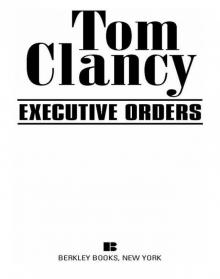 Executive Orders
Executive Orders Lincoln, the unknown
Lincoln, the unknown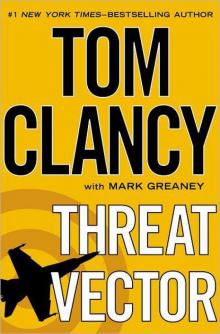 Threat Vector
Threat Vector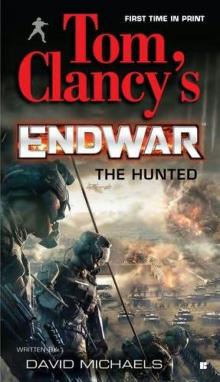 The Hunted
The Hunted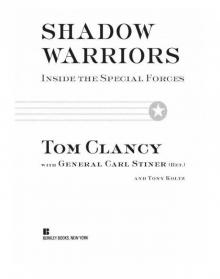 Shadow Warriors: Inside the Special Forces
Shadow Warriors: Inside the Special Forces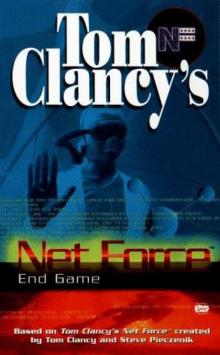 End Game
End Game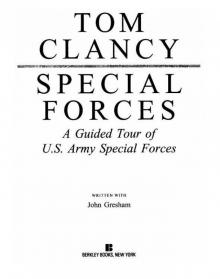 Special Forces: A Guided Tour of U.S. Army Special Forces
Special Forces: A Guided Tour of U.S. Army Special Forces Locked On
Locked On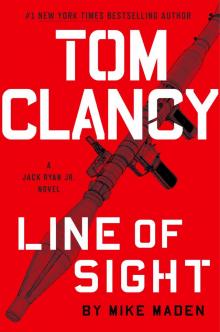 Line of Sight
Line of Sight Tom Clancy Enemy Contact - Mike Maden
Tom Clancy Enemy Contact - Mike Maden Fighter Wing: A Guided Tour of an Air Force Combat Wing
Fighter Wing: A Guided Tour of an Air Force Combat Wing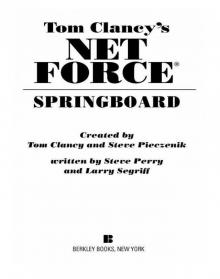 Springboard
Springboard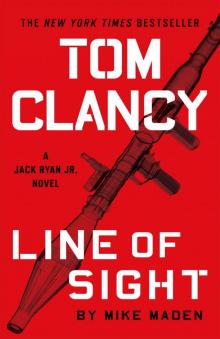 Line of Sight - Mike Maden
Line of Sight - Mike Maden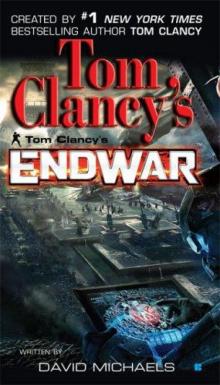 EndWar
EndWar Dead or Alive
Dead or Alive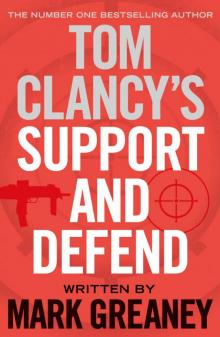 Tom Clancy Support and Defend
Tom Clancy Support and Defend Checkmate
Checkmate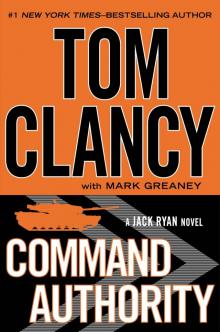 Command Authority
Command Authority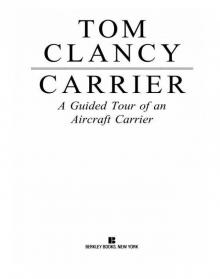 Carrier: A Guided Tour of an Aircraft Carrier
Carrier: A Guided Tour of an Aircraft Carrier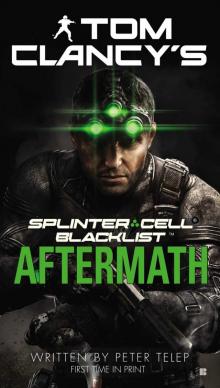 Blacklist Aftermath
Blacklist Aftermath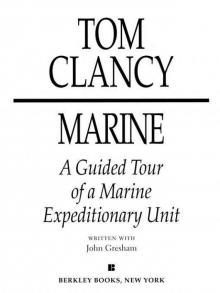 Marine: A Guided Tour of a Marine Expeditionary Unit
Marine: A Guided Tour of a Marine Expeditionary Unit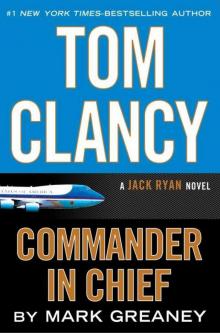 Commander-In-Chief
Commander-In-Chief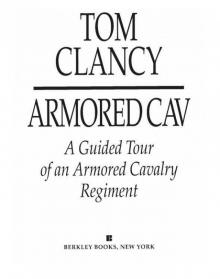 Armored Cav: A Guided Tour of an Armored Cavalry Regiment
Armored Cav: A Guided Tour of an Armored Cavalry Regiment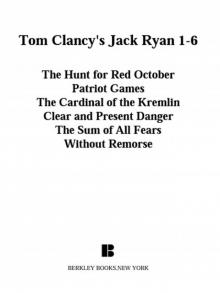 Tom Clancy's Jack Ryan Books 1-6
Tom Clancy's Jack Ryan Books 1-6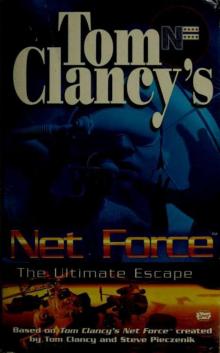 The Ultimate Escape
The Ultimate Escape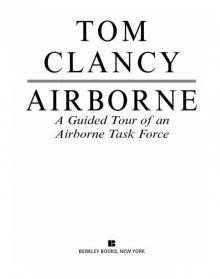 Airborne: A Guided Tour of an Airborne Task Force
Airborne: A Guided Tour of an Airborne Task Force Debt of Honor
Debt of Honor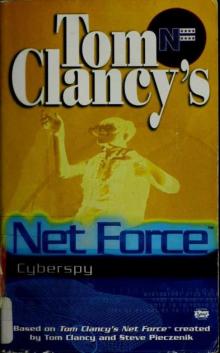 Cyberspy
Cyberspy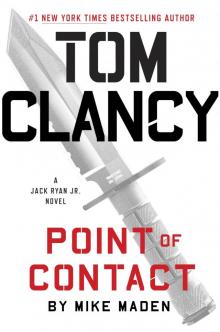 Point of Contact
Point of Contact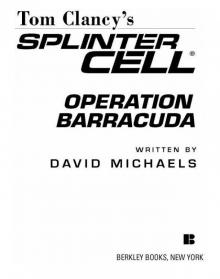 Operation Barracuda (2005)
Operation Barracuda (2005)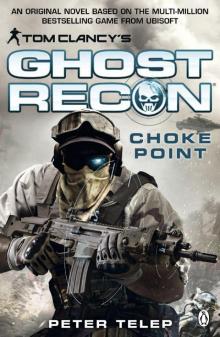 Choke Point
Choke Point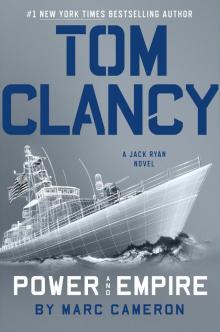 Power and Empire
Power and Empire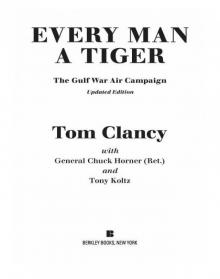 Every Man a Tiger: The Gulf War Air Campaign
Every Man a Tiger: The Gulf War Air Campaign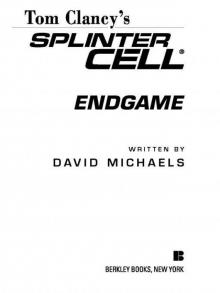 Endgame (1998)
Endgame (1998)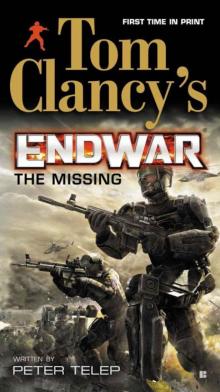 EndWar: The Missing
EndWar: The Missing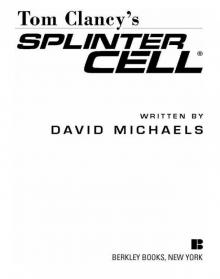 Splinter Cell (2004)
Splinter Cell (2004)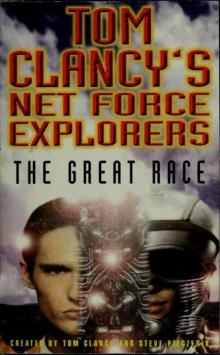 The Great Race
The Great Race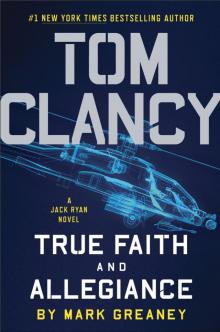 True Faith and Allegiance
True Faith and Allegiance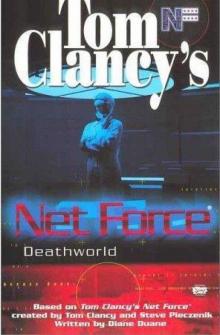 Deathworld
Deathworld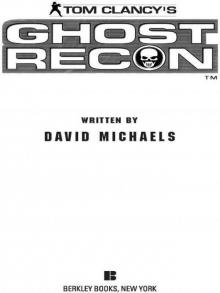 Ghost Recon (2008)
Ghost Recon (2008)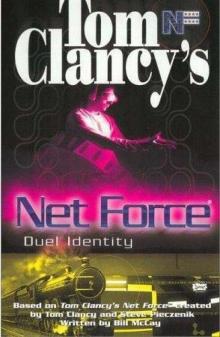 Duel Identity
Duel Identity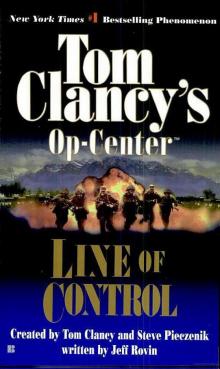 Line of Control o-8
Line of Control o-8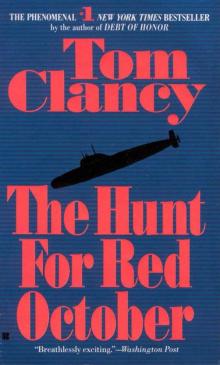 The Hunt for Red October jr-3
The Hunt for Red October jr-3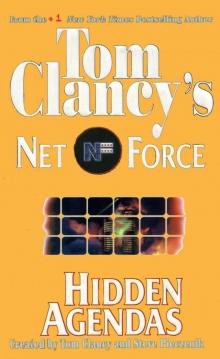 Hidden Agendas nf-2
Hidden Agendas nf-2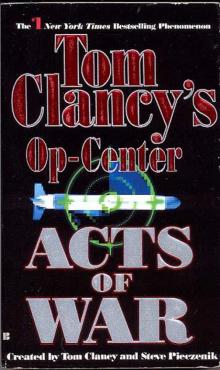 Acts of War oc-4
Acts of War oc-4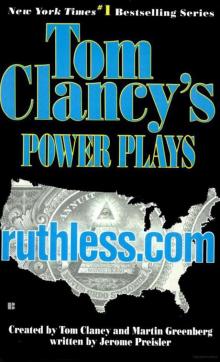 Ruthless.Com pp-2
Ruthless.Com pp-2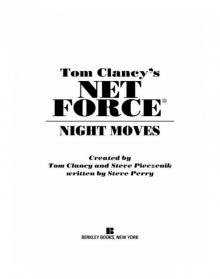 Night Moves
Night Moves The Hounds of Rome - Mystery of a Fugitive Priest
The Hounds of Rome - Mystery of a Fugitive Priest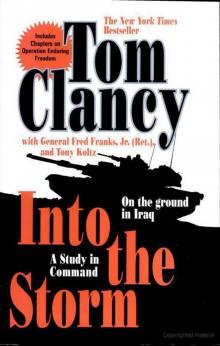 Into the Storm: On the Ground in Iraq sic-1
Into the Storm: On the Ground in Iraq sic-1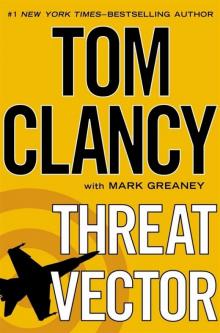 Threat Vector jrj-4
Threat Vector jrj-4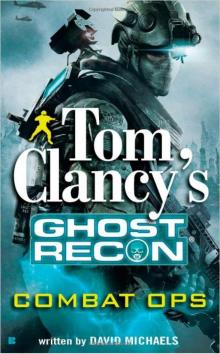 Combat Ops gr-2
Combat Ops gr-2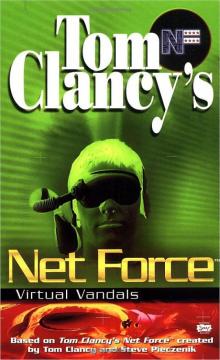 Virtual Vandals nfe-1
Virtual Vandals nfe-1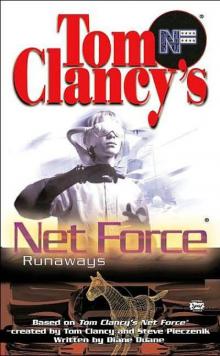 Runaways nfe-16
Runaways nfe-16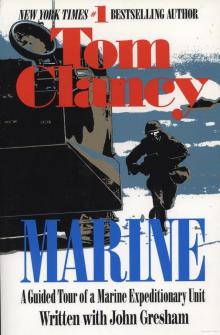 Marine: A Guided Tour of a Marine Expeditionary Unit tcml-4
Marine: A Guided Tour of a Marine Expeditionary Unit tcml-4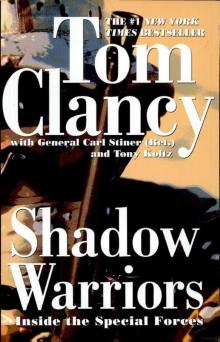 Shadow Warriors: Inside the Special Forces sic-3
Shadow Warriors: Inside the Special Forces sic-3 Jack Ryan Books 1-6
Jack Ryan Books 1-6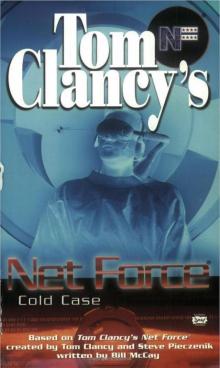 Cold Case nfe-15
Cold Case nfe-15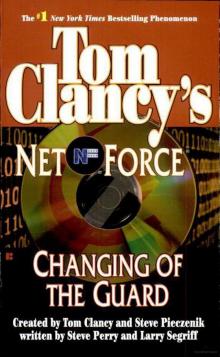 Changing of the Guard nf-8
Changing of the Guard nf-8 Splinter Cell sc-1
Splinter Cell sc-1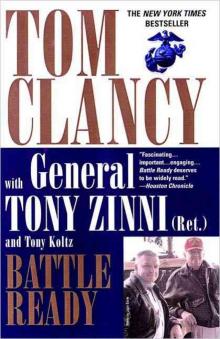 Battle Ready sic-4
Battle Ready sic-4 The Bear and the Dragon jrao-11
The Bear and the Dragon jrao-11 Fighter Wing: A Guided Tour of an Air Force Combat Wing tcml-3
Fighter Wing: A Guided Tour of an Air Force Combat Wing tcml-3 Patriot Games jr-1
Patriot Games jr-1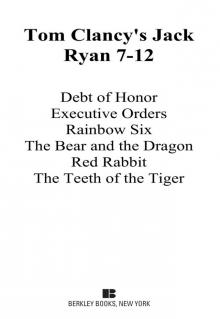 Jack Ryan Books 7-12
Jack Ryan Books 7-12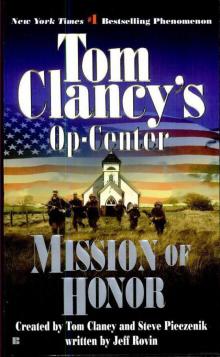 Mission of Honor o-9
Mission of Honor o-9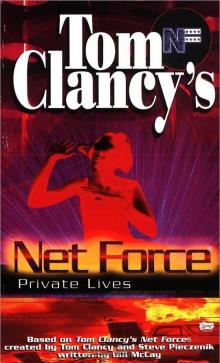 Private Lives nfe-9
Private Lives nfe-9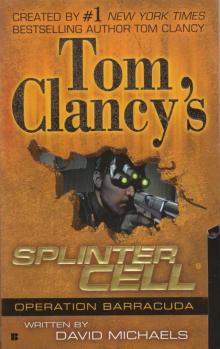 Operation Barracuda sc-2
Operation Barracuda sc-2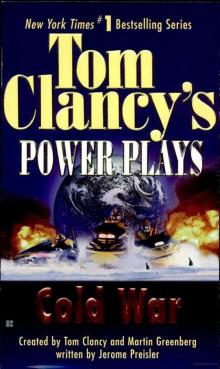 Cold War pp-5
Cold War pp-5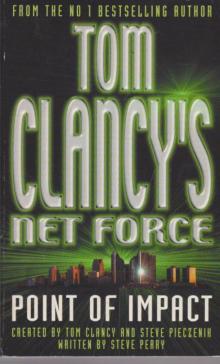 Point of Impact nf-5
Point of Impact nf-5 Red Rabbit jr-9
Red Rabbit jr-9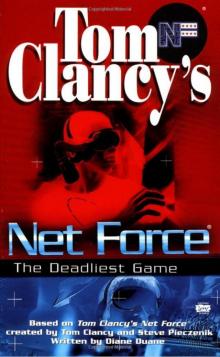 The Deadliest Game nfe-2
The Deadliest Game nfe-2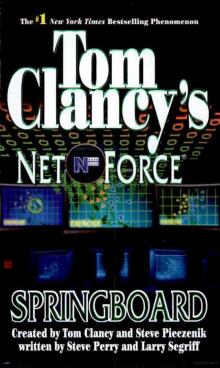 Springboard nf-9
Springboard nf-9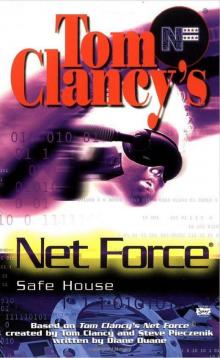 Safe House nfe-10
Safe House nfe-10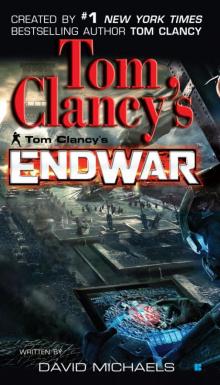 EndWar e-1
EndWar e-1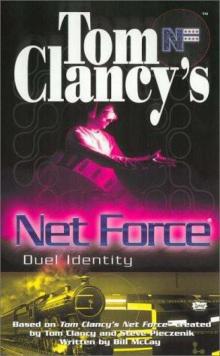 Duel Identity nfe-12
Duel Identity nfe-12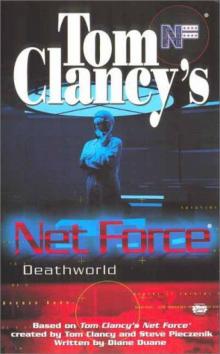 Deathworld nfe-13
Deathworld nfe-13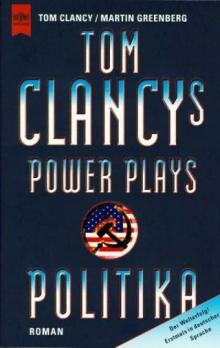 Politika pp-1
Politika pp-1 Rainbow Six jr-9
Rainbow Six jr-9 Tom Clancy's Power Plays 1 - 4
Tom Clancy's Power Plays 1 - 4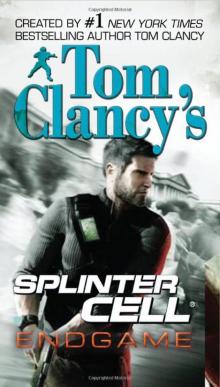 Endgame sc-6
Endgame sc-6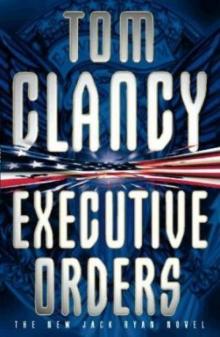 Executive Orders jr-7
Executive Orders jr-7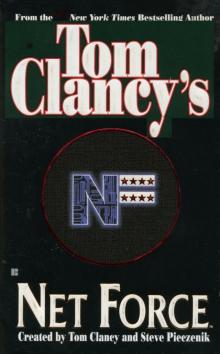 Net Force nf-1
Net Force nf-1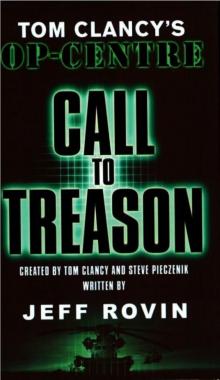 Call to Treason o-11
Call to Treason o-11 Locked On jrj-3
Locked On jrj-3 Against All Enemies
Against All Enemies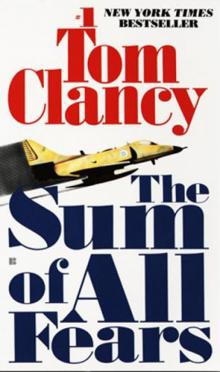 The Sum of All Fears jr-7
The Sum of All Fears jr-7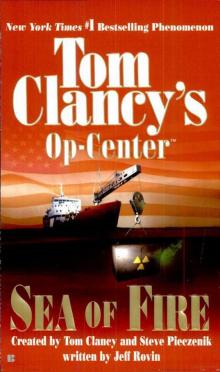 Sea of Fire o-10
Sea of Fire o-10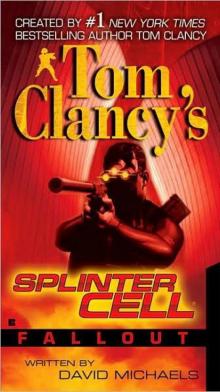 Fallout sc-4
Fallout sc-4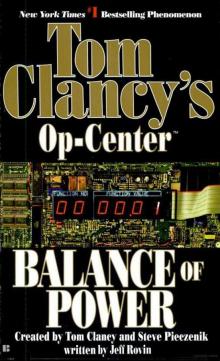 Balance of Power o-5
Balance of Power o-5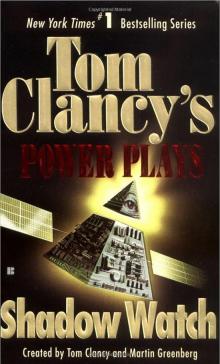 Shadow Watch pp-3
Shadow Watch pp-3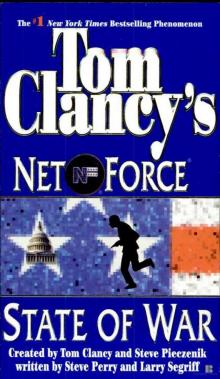 State of War nf-7
State of War nf-7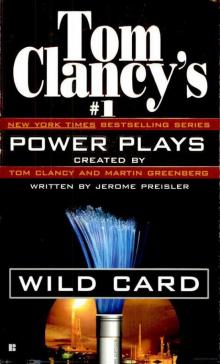 Wild Card pp-8
Wild Card pp-8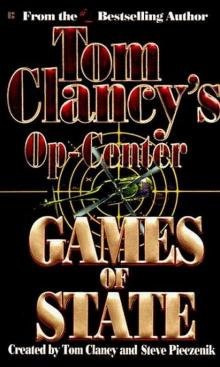 Games of State o-3
Games of State o-3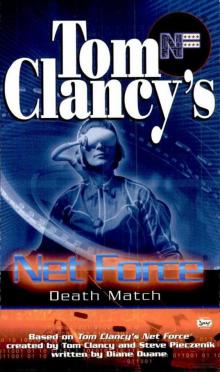 Death Match nfe-18
Death Match nfe-18 Against All Enemies mm-1
Against All Enemies mm-1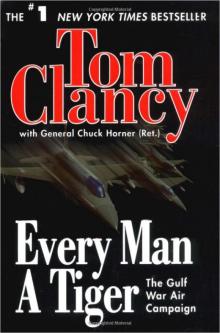 Every Man a Tiger: The Gulf War Air Campaign sic-2
Every Man a Tiger: The Gulf War Air Campaign sic-2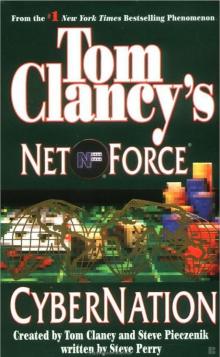 Cybernation nf-6
Cybernation nf-6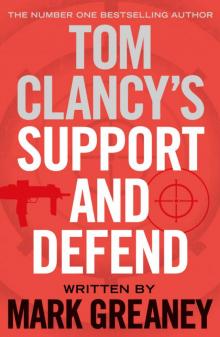 Support and Defend
Support and Defend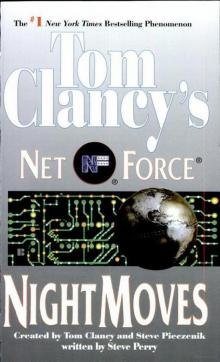 Night Moves nf-3
Night Moves nf-3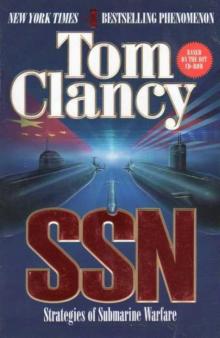 SSN
SSN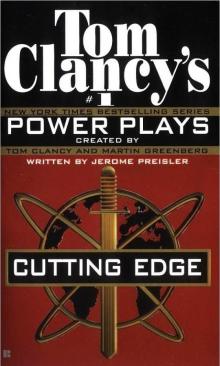 Cutting Edge pp-6
Cutting Edge pp-6 The Cardinal of the Kremlin jrao-5
The Cardinal of the Kremlin jrao-5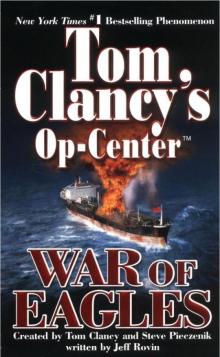 War of Eagles o-12
War of Eagles o-12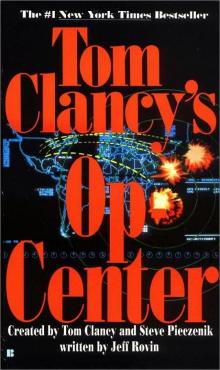 Op-Center o-1
Op-Center o-1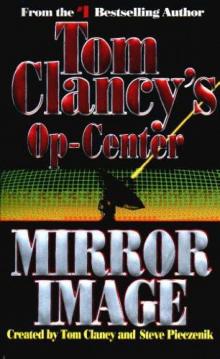 Mirror Image o-2
Mirror Image o-2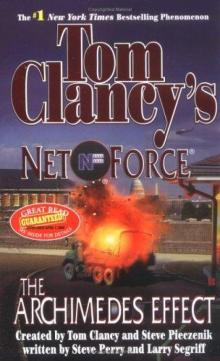 The Archimedes Effect nf-10
The Archimedes Effect nf-10 Teeth of the Tiger jrj-1
Teeth of the Tiger jrj-1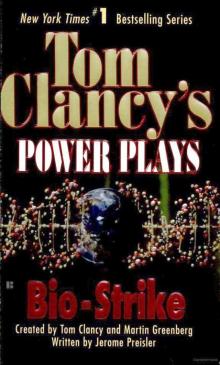 Bio-Strike pp-4
Bio-Strike pp-4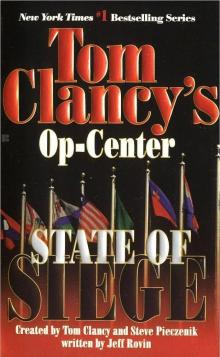 State of Siege o-6
State of Siege o-6 Debt of Honor jr-6
Debt of Honor jr-6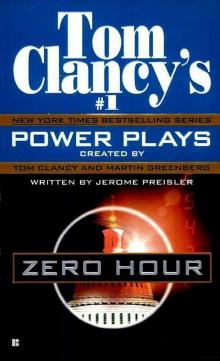 Zero Hour pp-7
Zero Hour pp-7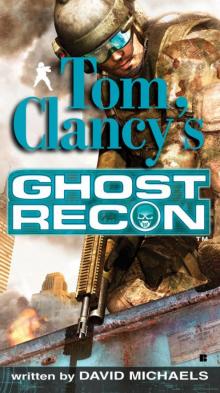 Ghost Recon gr-1
Ghost Recon gr-1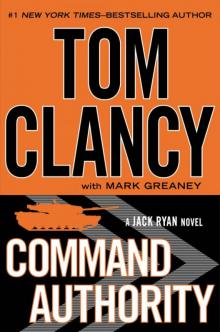 Command Authority jr-10
Command Authority jr-10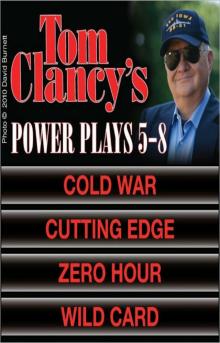 Tom Clancy's Power Plays 5 - 8
Tom Clancy's Power Plays 5 - 8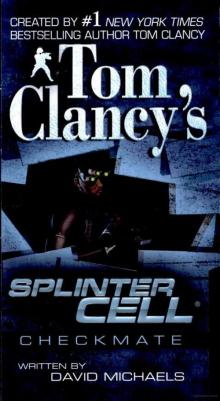 Checkmate sc-3
Checkmate sc-3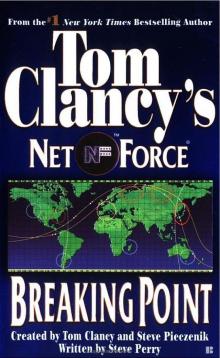 Breaking Point nf-4
Breaking Point nf-4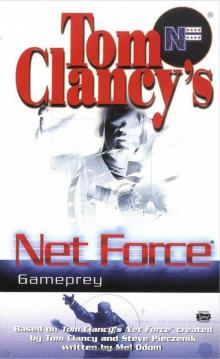 Gameprey nfe-11
Gameprey nfe-11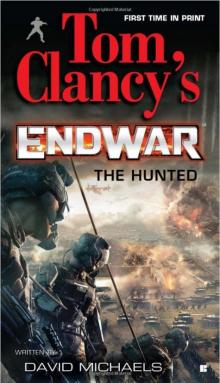 The Hunted e-2
The Hunted e-2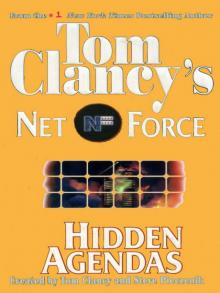 Hidden Agendas
Hidden Agendas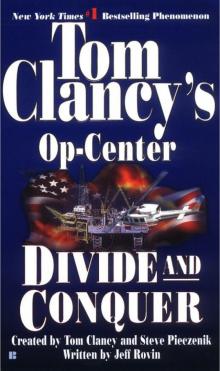 Divide and Conquer o-7
Divide and Conquer o-7